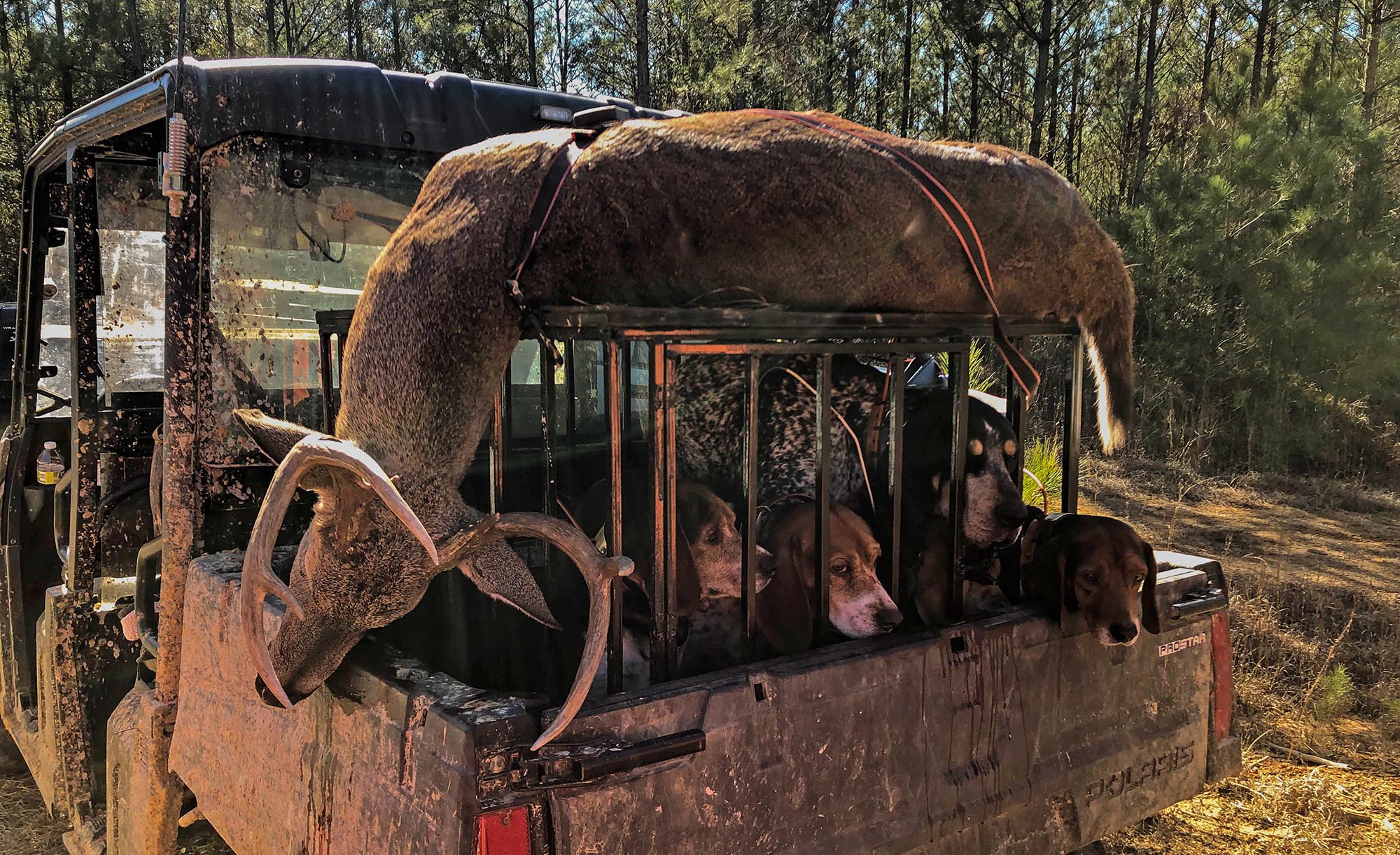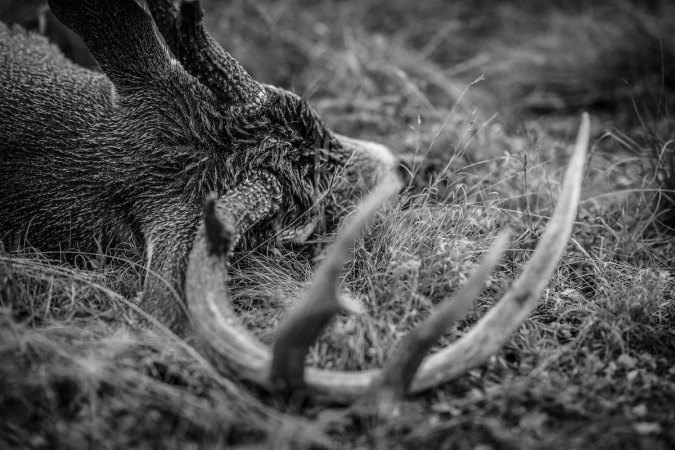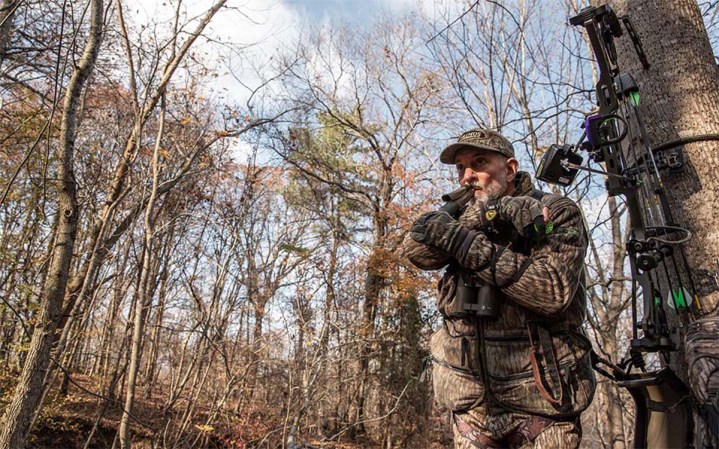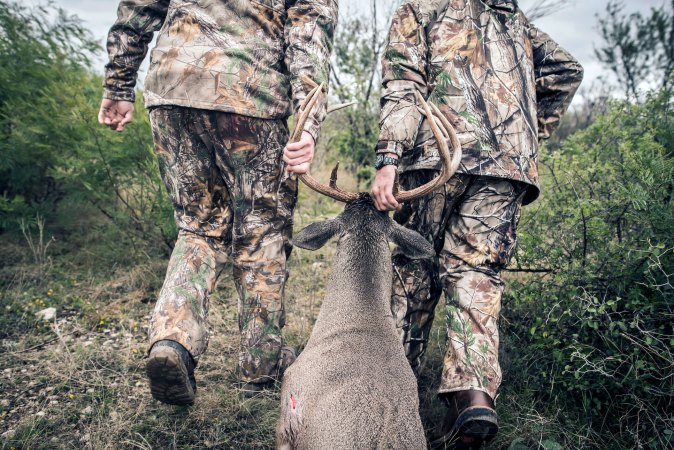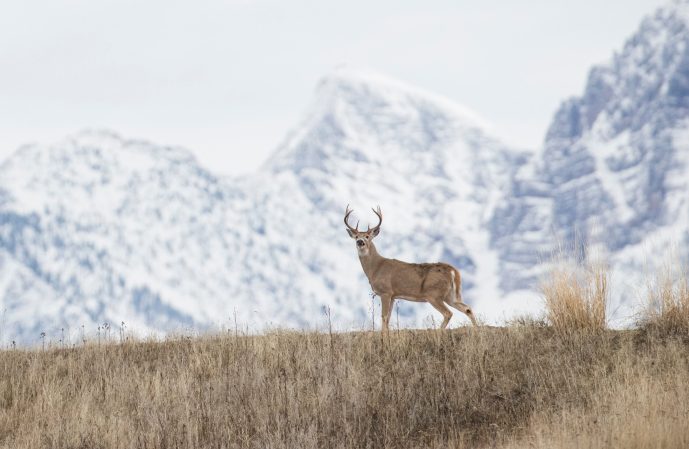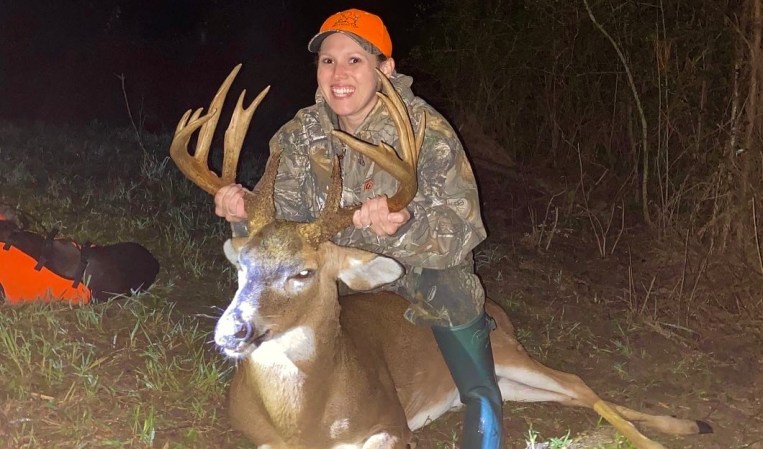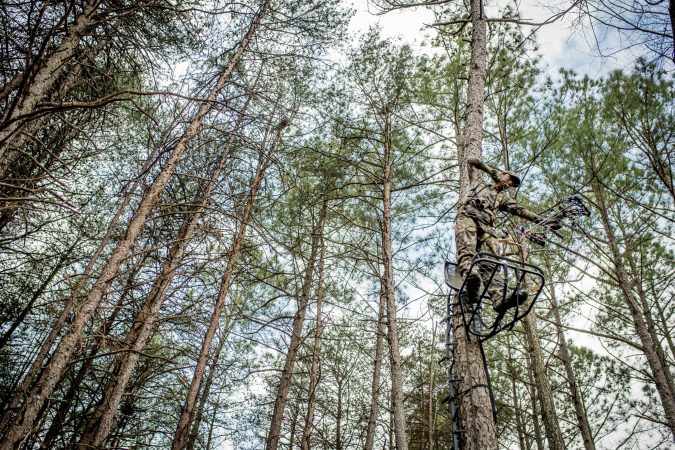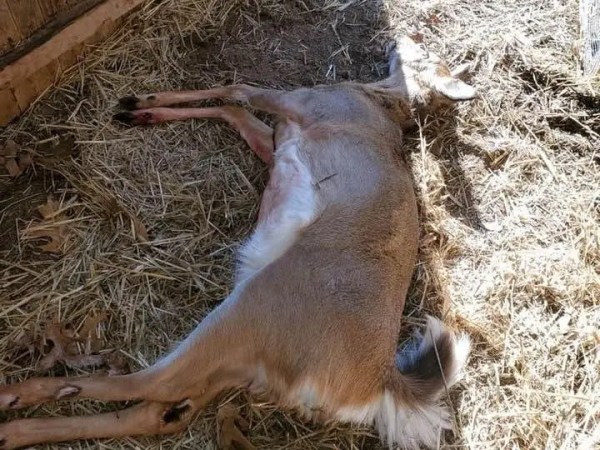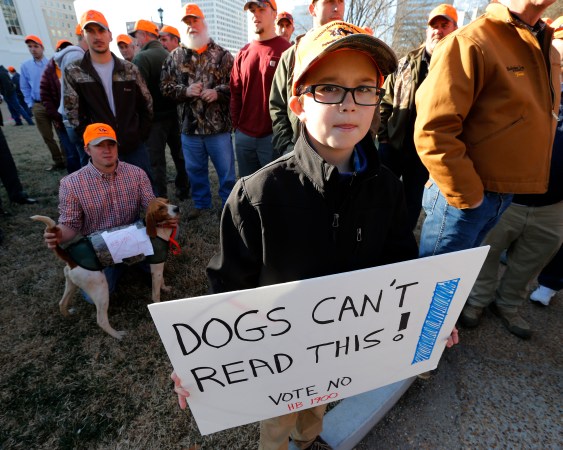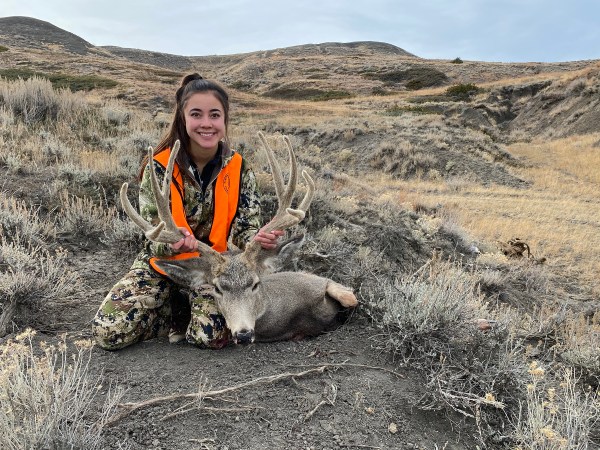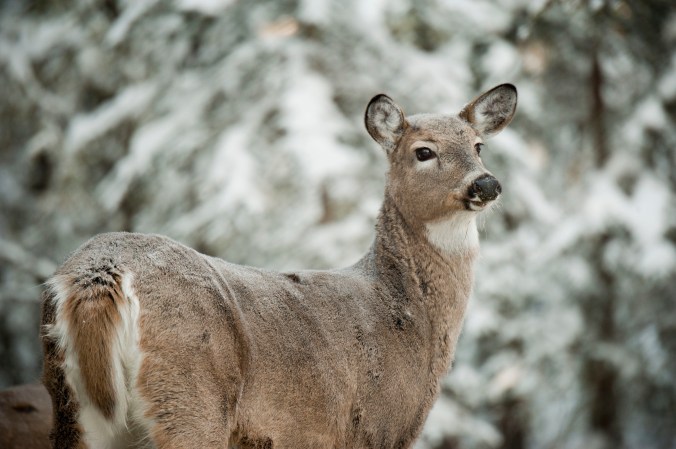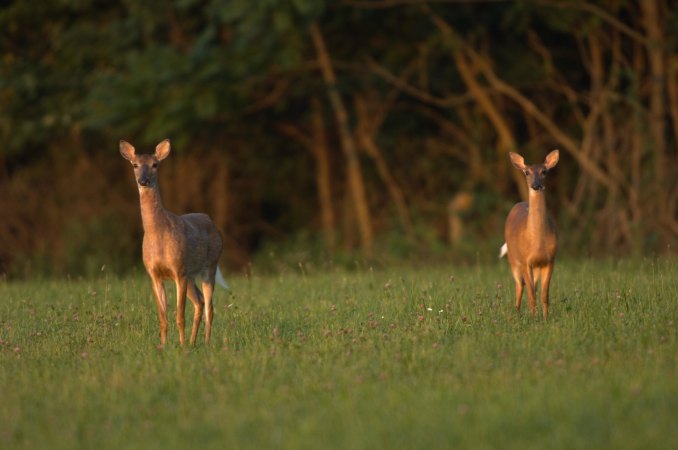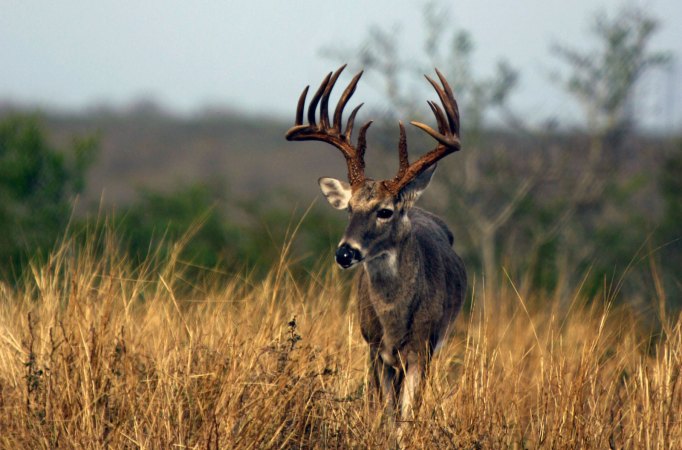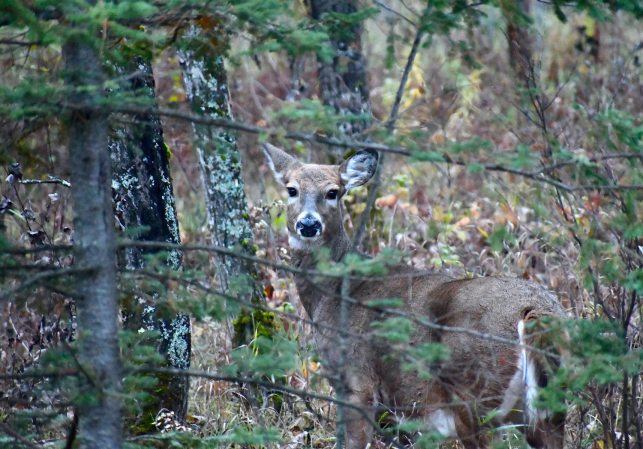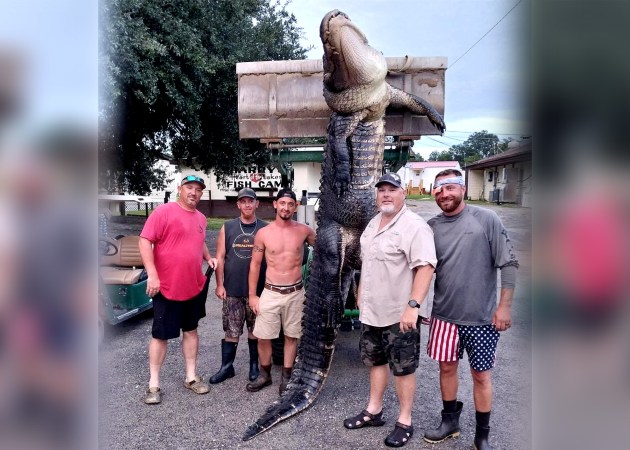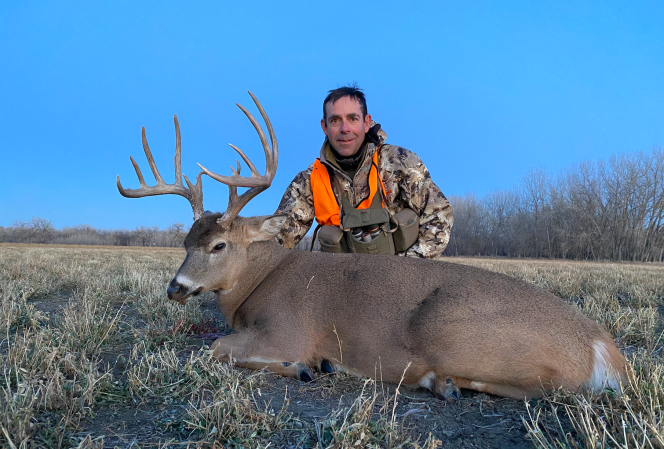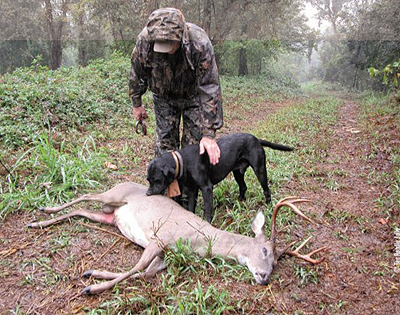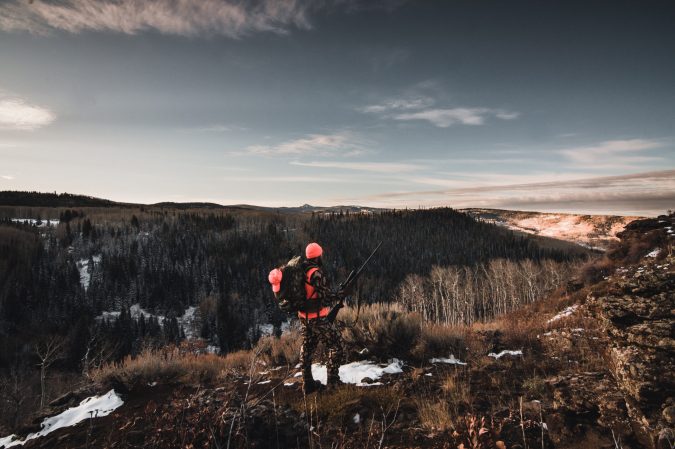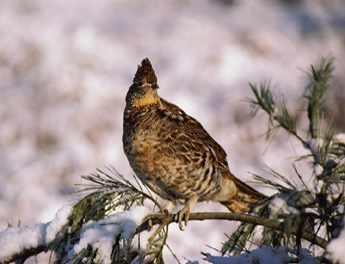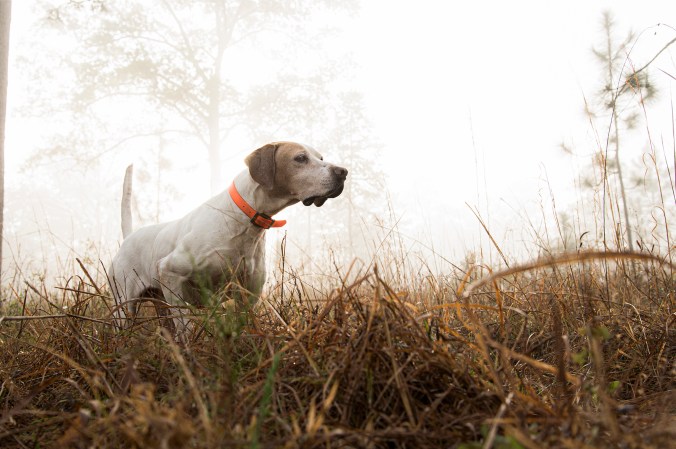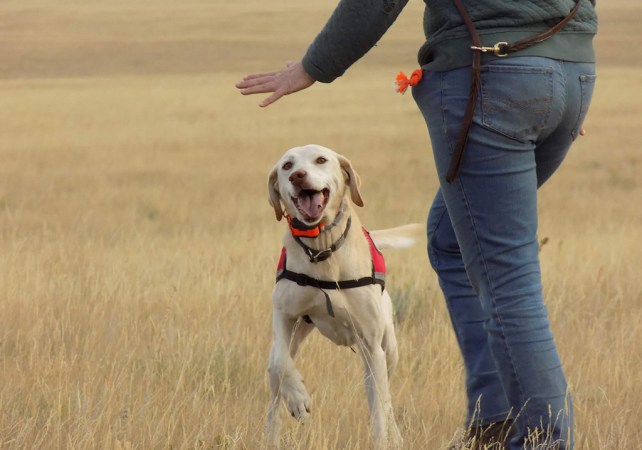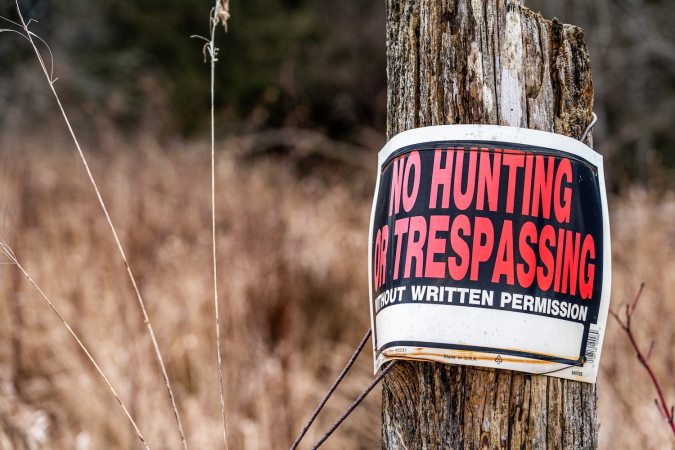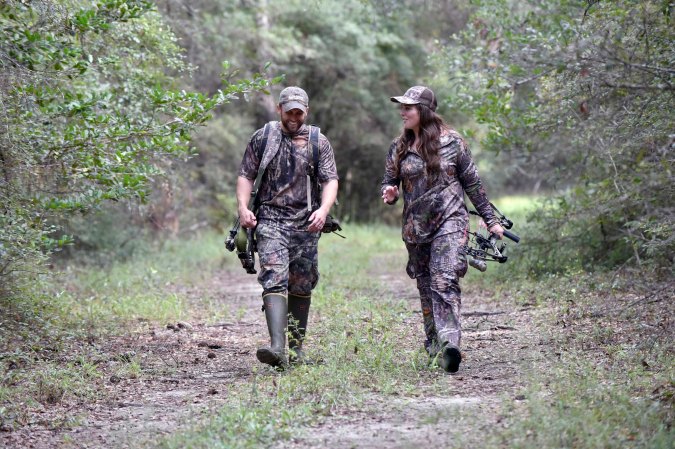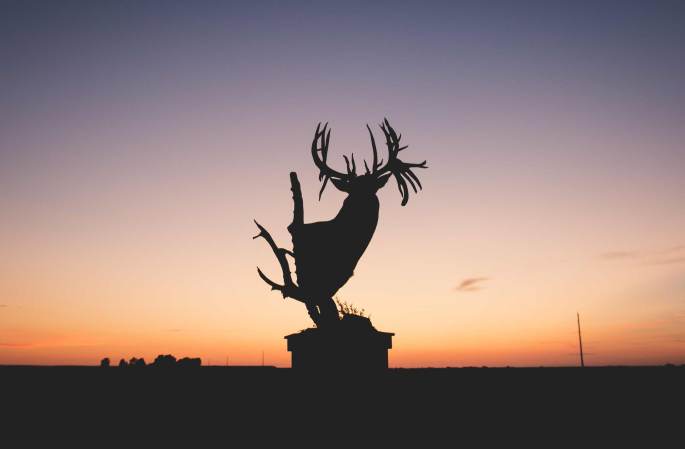Past an old logging gate, a gravel road snakes through a young stand of pine. Meandering through the stand, my truck headlights brighten the back wall of a squat tin building that looks more like an old feed shed than a deer camp. Inside, a makeshift counter holds a logbook for stand locations and check-ins. An aerial map of the property (all 3,000 acres of it) and faded grip-n-grin photos of bucks from past seasons adorn the walls. Every member of the Limestone Creek Hunting Club lives within 20 minutes of here, so there’s no need for actual living quarters. Before this camp house was built, members like my grandfather and father just gathered around an old burn barrel that marked the official rendezvous point. They would meet there first, then decide where to turn the dogs out each morning of the season.
Limestone Creek is just one camp within a patchwork of clubs that are scattered around the Pearl River region of south-central Mississippi. And while a few other surrounding camps also hunt deer with dogs, the Limestone club has clung to this tradition tighter than any, for almost 50 years. In that half century, their dog hunts have become something of an art. The preferred mediums are CB radios, beagles, and old lever guns or pump-action rifles. The featured artist behind these runs is Tim Orders, one of Limestone’s longest tenured members.
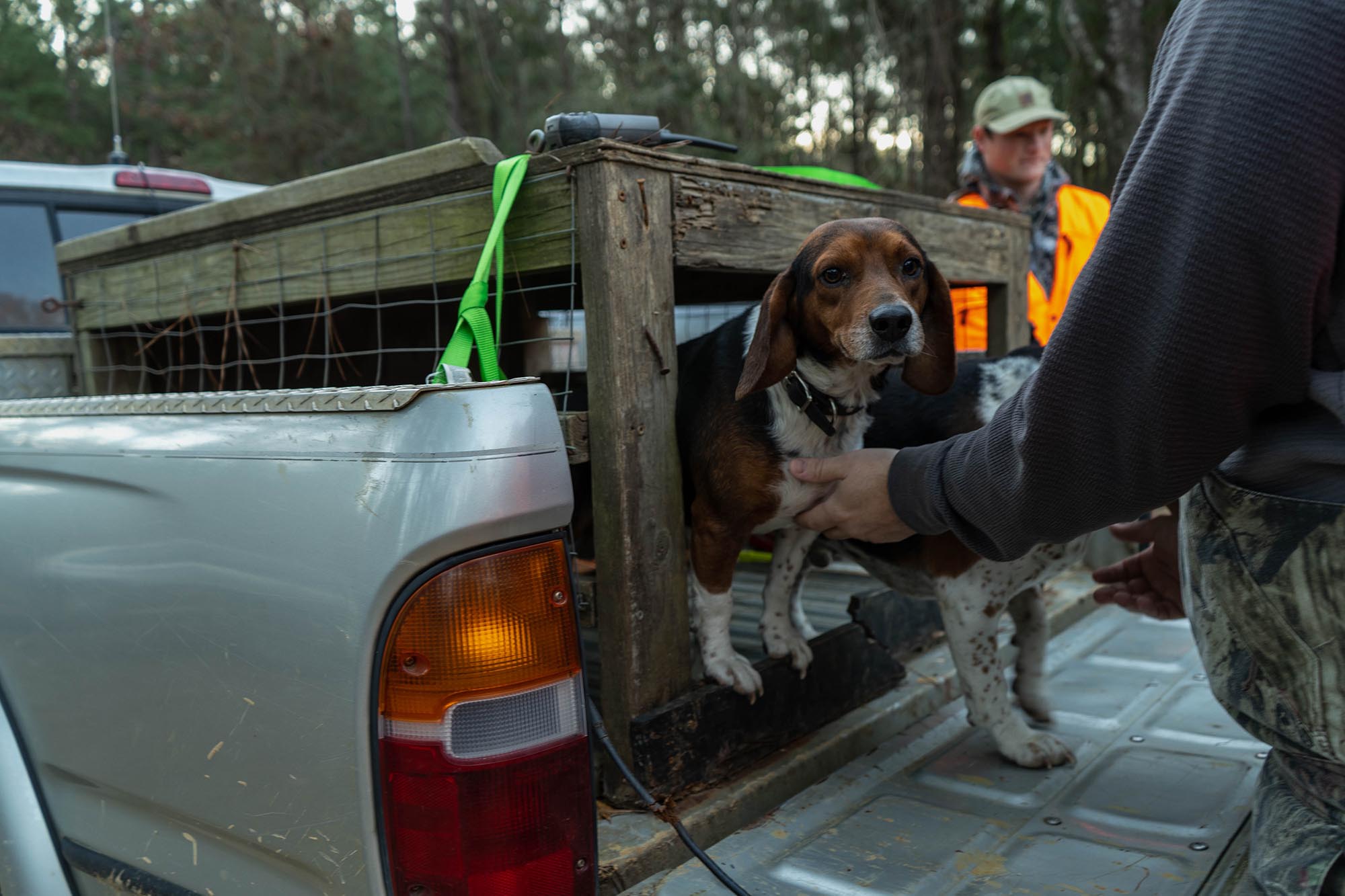
On this morning Orders arrives last, in typical fashion, with his blueticks and beagles in tow. While collaring the dogs, he directs everyone to specific posts; road crossings, food plots, and creek bottoms, all named after hunters or the bucks they’d killed there. And while the Limestone club has taken plenty of big bucks over the years, antlers aren’t the reason its members keep coming back. The club’s history, the shared excitement on successful hunts, and the enduring camp traditions are what dog hunts are really all about.
But for deer hunters who don’t use dogs, and aren’t part of the tradition, it’s easy to be skeptical when you see a battalion of orange vests spread along the roads—possibly near your hunting property. While there are plenty of deer dog hunters who understand boundaries and sensible hunting etiquette, there are plenty who don’t. Those who don’t will surely run through some treestand hunter’s setups. Hunting deer with dogs is currently legal in nine southern states (MS, LA, AR, NC, SC, TN, GA, VA, FL), and when the hounds get to barking it can feel like the end of deer season for everyone else.
But just because dog hunting season begins doesn’t mean that treestand hunters should give up. Here’s what all hunters should understand about dog hunting, and how they can adapt their strategies to still be successful once the hounds hit the woods.
The Anatomy of a Deer Dog Hunt
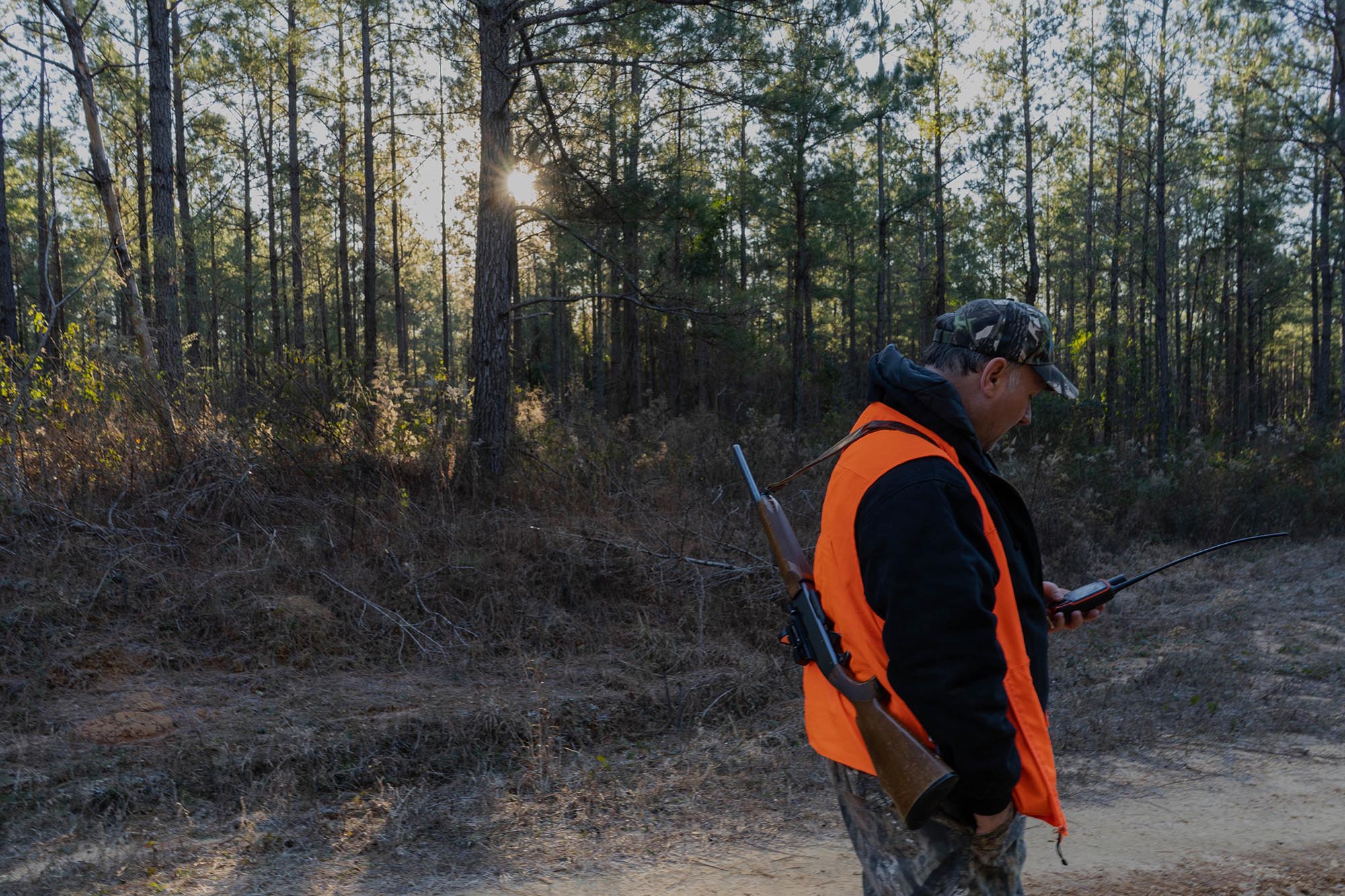
I hunt several areas, both public and private, where deer dog hunters frequent. This year, I rode shotgun with Orders during one of his club’s first hunts of the season to see his deer dog strategies and to learn how to adapt my own hunting around dog hunters. If you’re unfamiliar with hunting deer with dogs, here’s an overview:
- Hunters decide where they plan to turn the dogs out, usually at the edge of a known bedding area.
- Other hunters are posted at safe distances around this bedding, covering expected or historical escape routes.
- The size of the hunting crew depends on the size of the area. Usually anywhere from five to 20 hunters work together with no fewer than three hounds on the ground.
- Once everyone arrives at their spot, the dog handler turns the hounds out in hopes that they cut a track and jump a deer.
- Once the dogs cut a track, they begin howling. At this point the deer are already at their escape routes, well ahead of the dogs.
- With all the escape routes covered, hunters communicate via CB radios, listen to the direction of the dog howls, or use gps collars to pinpoint the deer’s travel route.
- Because the deer are so far ahead of the dogs, they’re typically trotting away, not running full speed as one might assume.
- Hunters ready themselves and anticipate where the deer will emerge. Sometimes they have a chance to stop the deer and get off a quick shot.
- If deer sneak between two posts or through an uncovered area, someone with a dog box on their vehicle speeds to intercept the dogs before they leave the property or cross major roads. Best case scenario, someone shoots the deer. Worst case, the hunters don’t catch the dogs in time and the dogs run the deer for miles across other properties.
Understanding How Deer React to Dogs
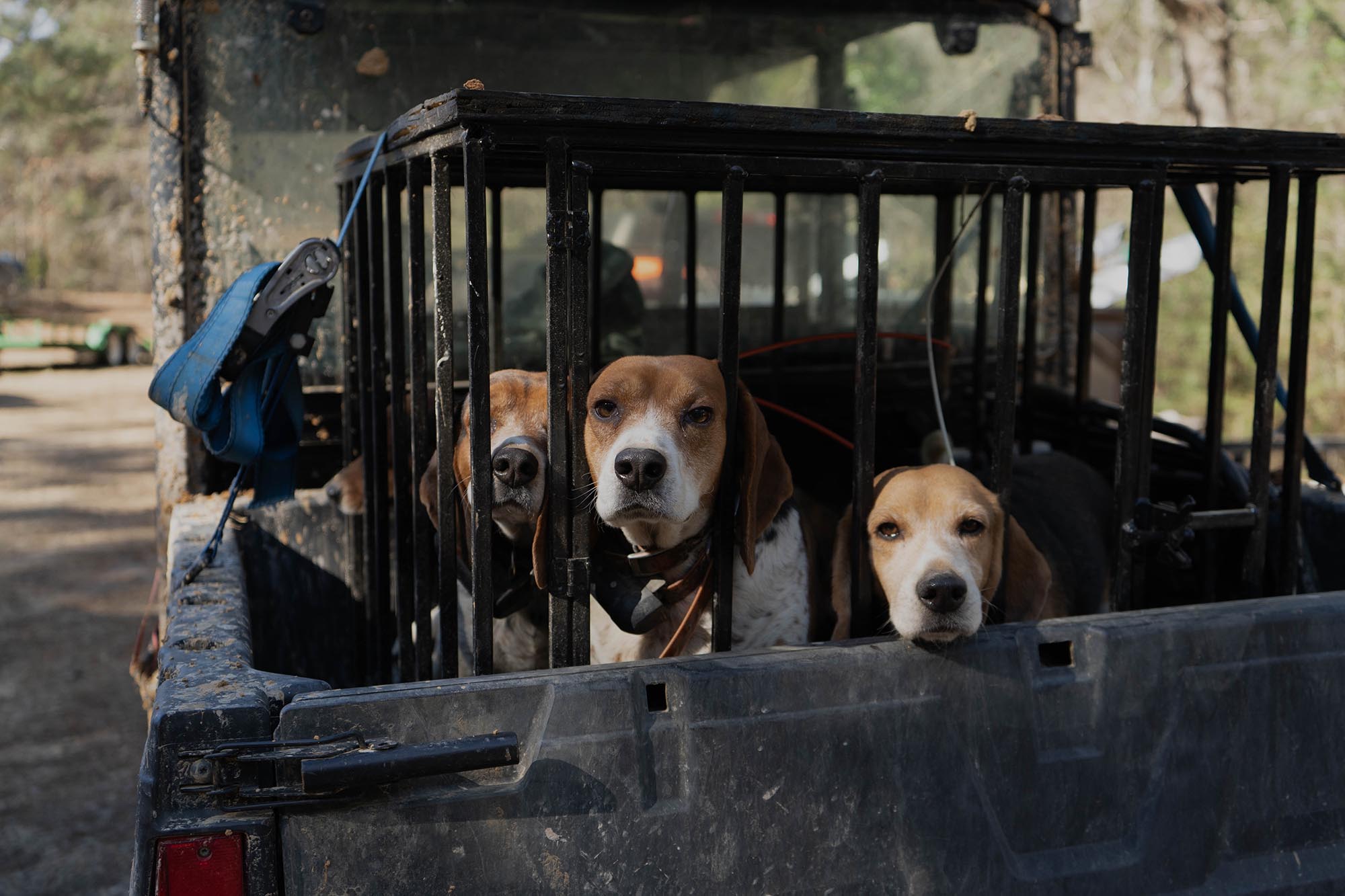
If your only experience with deer dogs involves a pack of beagles running through your treestand setup, you probably aren’t a fan of the tradition in general. I’ve been on this end of a dog hunt several times. It can be frustrating. You wake up super early, get to your stand before daylight, only to have a spike run through after sunrise with a pack of beagles trailing behind. It will feel like that spot is burned for the day.
But if you understand how deer react to dogs, you can still be successful during dog season even if you’re not with the deer dog crew.
My grandfather killed his three biggest bucks with dogs in the woods. Two of the three were taken during still hunts when dog hunters on neighboring properties ran deer onto the private ground he was hunting. He’d hunted with dogs before, so he knew the neighbors might run a buck by him.
I know several other hunters who look at dog season as an opportunity to give their hunting season a spark. Land Smathers is a dedicated Mississippi deer hunter who consistently kills mature bucks during dog season, often on public land.
Smathers cited one instance when he noticed that a party of dog hunters convened near some public ground he planned to hunt that morning. His familiarity with this particular ground gave him an idea of where the hunters would likely turn the dogs out, so he decided to quickly set up where he anticipated dogs might drive the deer.
“I knew that area, and there was only one place the deer could go if they were bedded there,” he said. “I slipped down a ridge that dumps into a river bottom where the deer would have to travel or cross the river. Once the dogs cut a track, deer started to funnel through this natural pinch point. I watched several does and a couple small bucks trot through the bottom until a shooter emerged. He came through at 60 yards before I leveled him with a shotgun. The dog hunters weren’t mad that I’d shot him, but they didn’t help me drag him out either.”
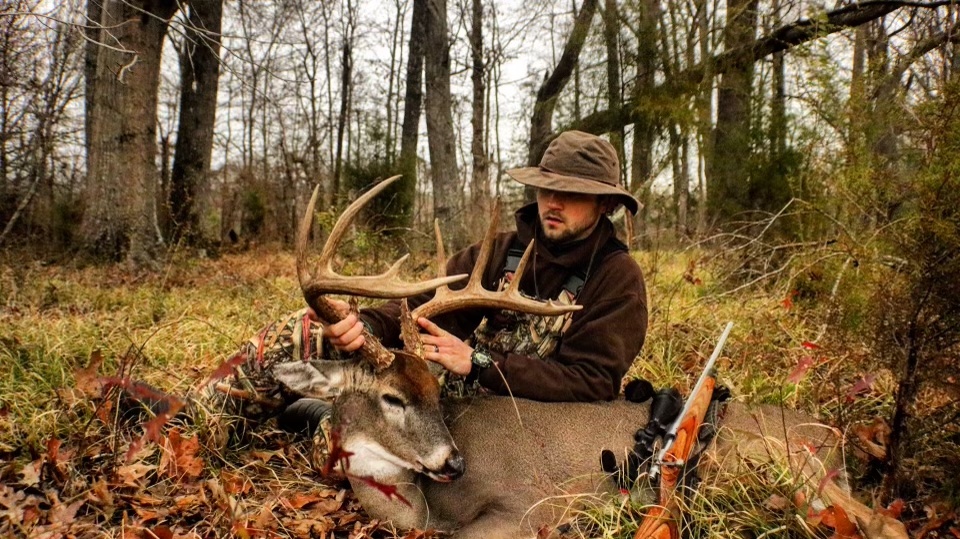
Smathers he didn’t always take advantage of dog season throughout his hunting career.
“It used to bother me,” he said. “I’d see a bunch of trucks with dog boxes at the store, and I would turn right around and go home. I finally realized that sulking about it didn’t do any good, so I just learned how to hunt around them, and it’s paid off a few times.”
Smathers’ experience and success in the middle of dog season has made him more empathetic toward the practice, and he sees more hunting opportunities, even with dogs, as a good thing for hunting overall. A lot of hunters grumble that deer hunting with dogs ruins the rest of their season or burns their best spots. It can certainly take a few days for things to return to “normal” in areas that dogs have covered, which is more problematic if you’re hunting small private properties. But the truth is, deer dogs don’t often drive deer completely out of an area.
“We only run dogs during the second season, which typically aligns with our rut,” Orders says. “It seems contrary to most hunters, but that time of year, deer can be so unpredictable anyway. We’ll turn the dogs out in spots where we know a buck is bedded, and if we don’t kill him right away, we’ll give that spot a rest and get a trail cam pic of him back in that same area within a couple days, if not sooner.”
Orders noted that this is especially true during the lockdown phase of the rut, or if there’s a hot doe in the area.
“If the dogs split up a buck and doe, he’ll return shortly to find her again,” Orders says. He also isn’t surprised when a new buck shows up on the property during dog season.
Orders’ style of dog hunting allows him and his club to jump bedded deer that have been heavily pressured. These bucks likely wouldn’t be caught moving during daylight hours otherwise. It’s logical to think that pressure from dogs might make bucks even more nocturnal. But this hasn’t been the case for Smathers, who spends about half his time hunting public land that gets hammered by dog hunters every season. In fact, many of his mature bucks were taken during dog season or shortly after it. Like Orders, he’s noticed that most of the time, bucks will show up shortly after the dogs are gone. While these mature bucks might not daylight in the middle of a food plot, they’re still moving, just in thicker cover, Smathers says.
Adapting Hunting Strategies
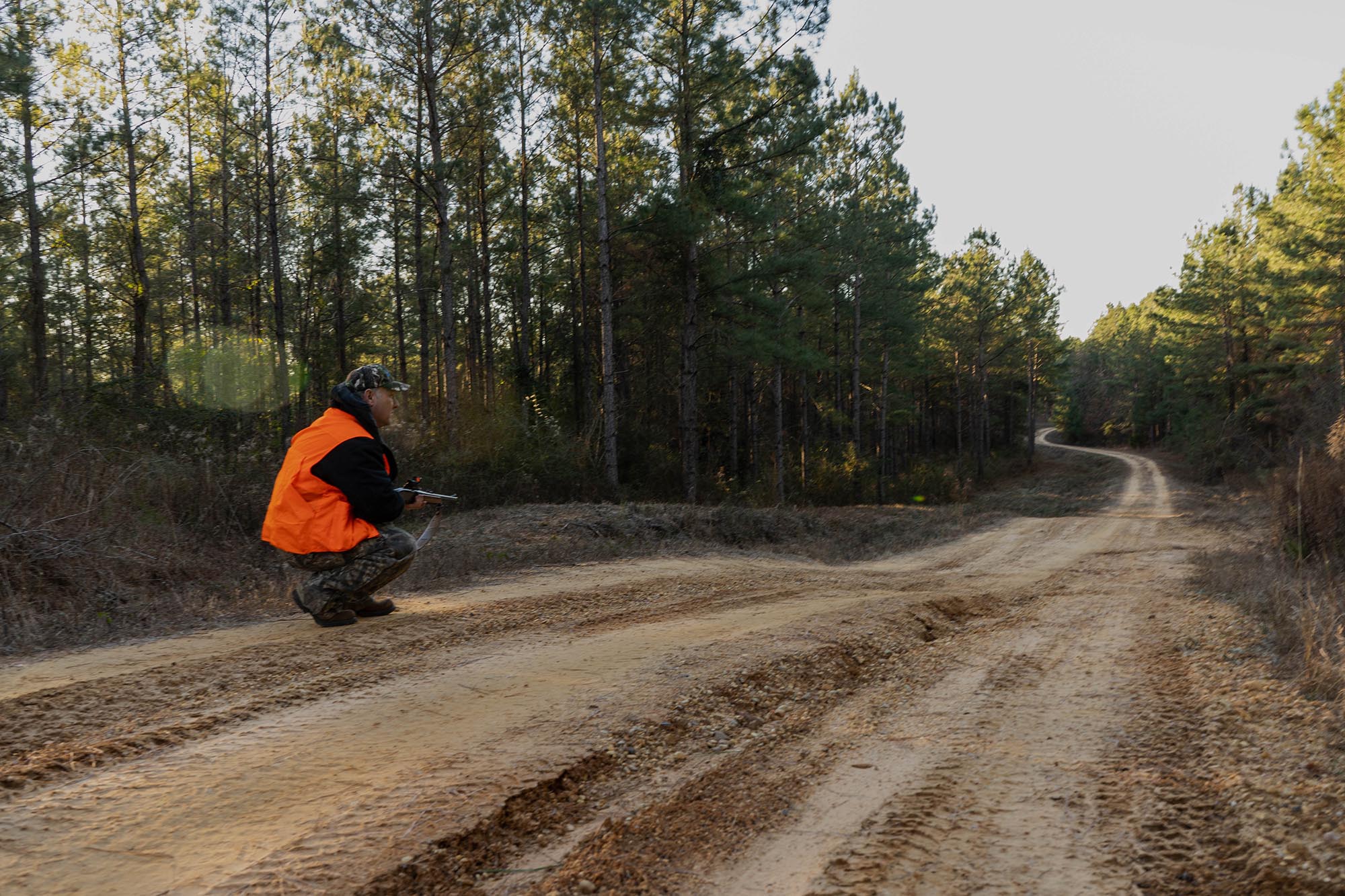
You don’t have to join a deer dog club to get in on the action. If you’re hunting public ground, and you decide to stick it out when the dog hunters roll up, make sure you’re at a safe distance from other hunters and wearing blaze orange. Then, follow these tips.
Hunt from the ground. If there was ever a time to ditch your treestand or saddle, it’s now. Being stuck in a tree limits your chances of getting a shot. But if you’re hunting from the ground, you can quickly change position as needed.
Cover likely escape routes. Deer prefer the path of least resistance. This is especially true with dogs on their trail. Deer will typically follow their preferred travel routes when jumped. But instead of bed-to-food travel, focus on bed-to-bed travel. The deer are headed for more cover, what’s the quickest route for them? That’s where you need to setup.
Use terrain features. You can use natural pinch points like saddles, creek or river crossings, and ridge systems to your advantage. You can find these with OnX or HuntStand and then fine-tune your setup once you’re there in person. Approach these areas similarly to how you would treestand hunt them but with more flexibility for your setup.
Play the wind. Even though they move based on where the dogs bump them, you can bet deer, especially mature bucks, will still use the wind to their favor. If you’re upwind of the deer, you’re unlikely to get a shot before they detect you.
Hunt the backdoor. Dog hunting crews often refer to an unlikely or underrated travel route that as the “backdoor.” Mature bucks love to sneak out through the backdoor. If you’re hunting a neighboring property and hear the dogs running parallel or even away from you, don’t leave just yet. If a mature buck is bedded near other deer that the dogs jump, they’ll often hang tight until the commotion passes and then slip out opposite or perpendicular to the rest of the deer to head for different cover. If possible, position yourself between “the backdoor” and the next potential bedding area.
Just get out there. If you already adhere to the “you can’t kill them from the couch” approach, this also applies during deer dog season. Adapting your hunting plan is always a better strategy than sitting at home. And if you’re lucky, it might end with a buck heading straight for your setup.
Limestone Traditions
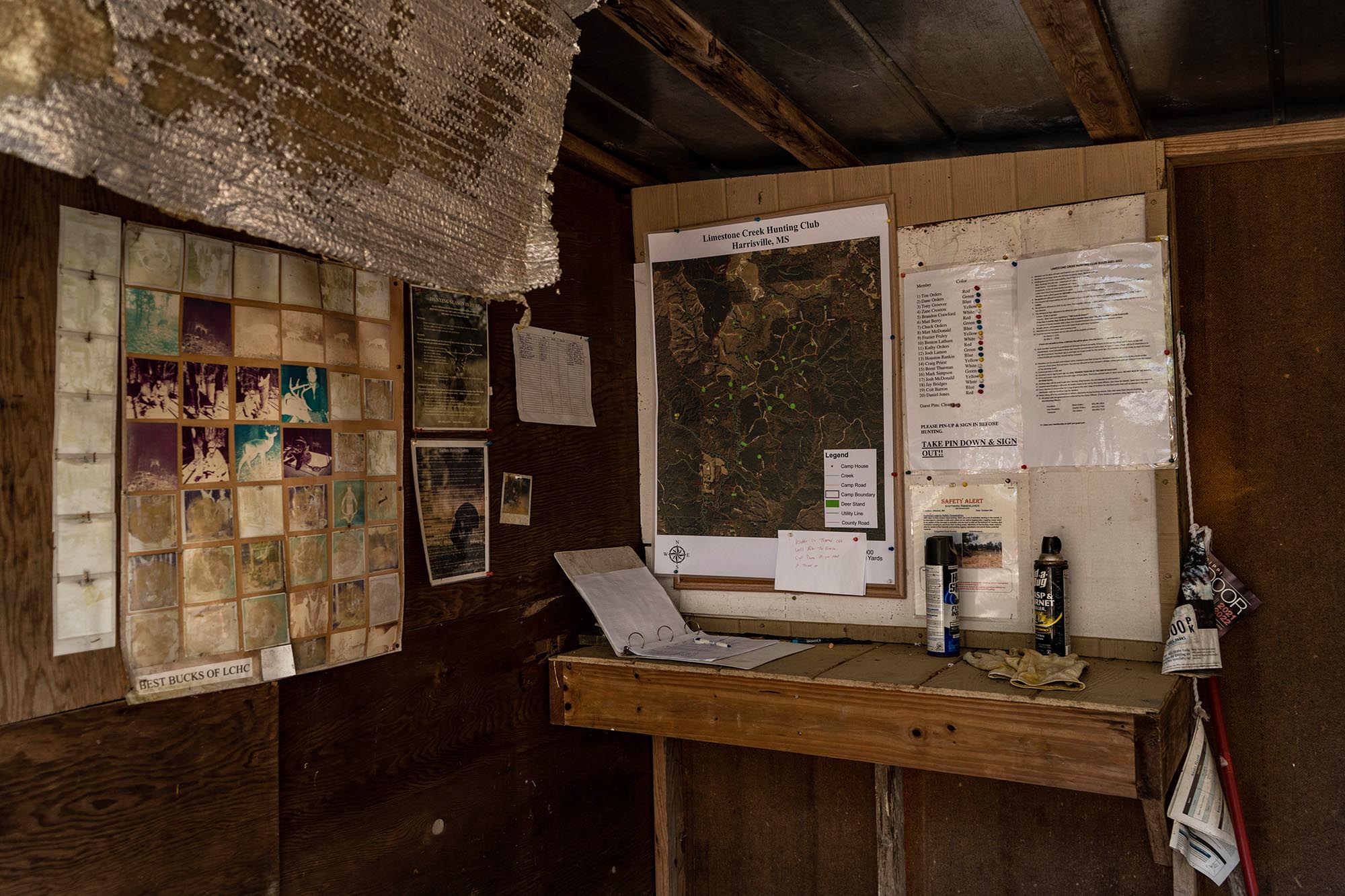
The day I joined Orders for one of Limestone’s hunts, the dogs jumped several does, but no one shot. While Orders isn’t against shooting does this time of year, especially for first timers, there’s an understanding that the club prefers to hold out for bucks. Even though no tags were punched, I still got to hear the dogs bark see all the action of a hunt well run.
READ NEXT: The Vanishing Legacy of Southern Rabbit Hunting
The next day, Orders and his crew did tag a buck and the shot several more before the season ended. With just 14 days (minus a few for bad weather) Limestone’s success rates are a thing to admire, especially when you consider that they only run half days. The club imposes a strict 12 p.m. deadline on itself, as opposed to conducting all day runs like a lot of other hunters might. Letting the property rest is important to their success, which is just one of the many lessons they’ve learned through years of running dogs. One of the key tenets that Orders and his son follow is to drop everything in order to catch dogs before they chase deer off the property. This philosophy not only leaves the club in good standing with surrounding clubs and landowners, it’s even helped them land a few extra spots to run.
Unfortunately, not all deer dog hunters hold themselves to this standard, and most of us can only watch while howling beagles run deer through our setups. But like any hunt, adapting is often the key to finding success. So the next time you hear the dogs jump a deer in your area, stick it out. A big buck could be headed your way.

